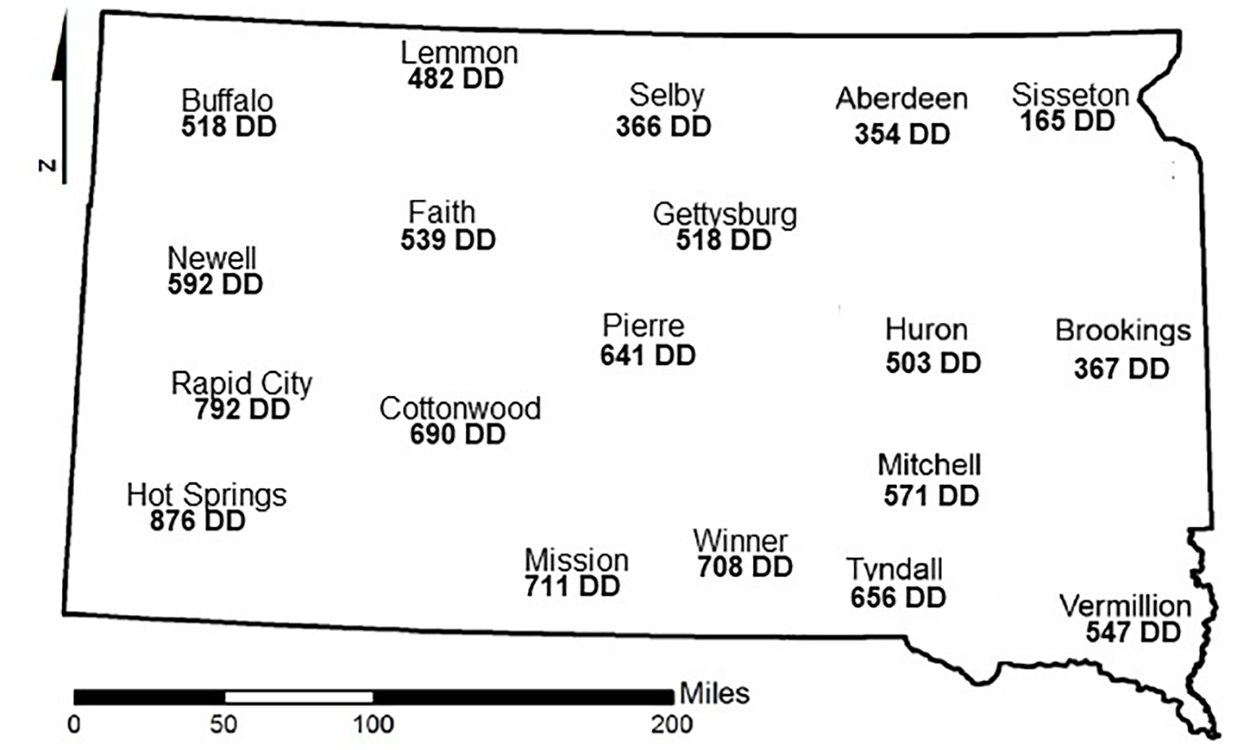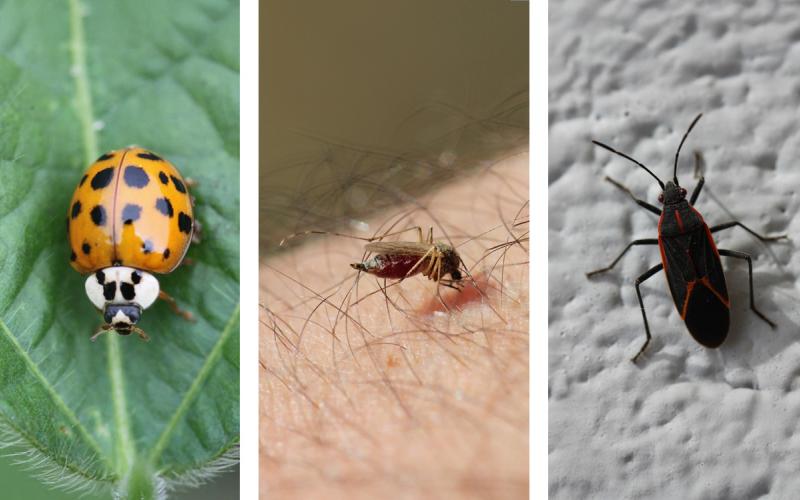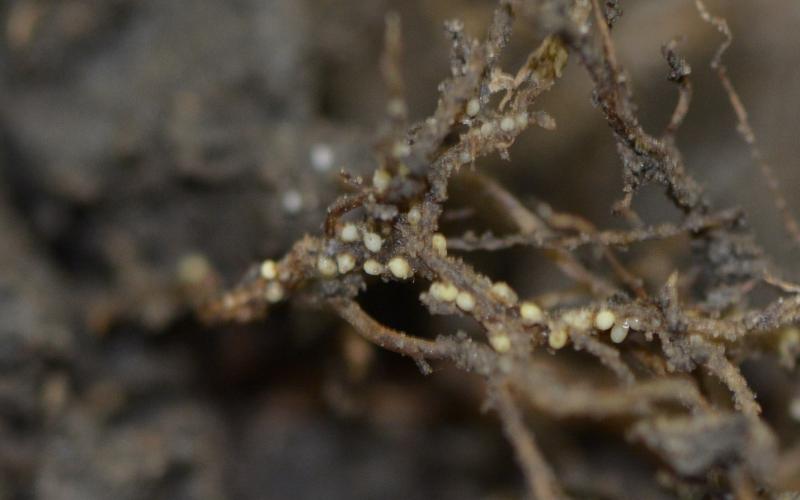Written with contributions by Shelby Pritchard, former SDSU Extension Pest Management Specialist.
Originally Submitted: May 5, 2022
Although seedcorn maggots can affect crops that are emerging or have recently emerged, they can also destroy planted seeds. Corn and soybean planted during cool conditions can be at risk for seedcorn maggot infestation. For most of South Dakota, we have accumulated enough degree days across the state that the peak emergence of the overwintering population has passed (Figure 1). Seedcorn maggot management must be done before planting, or the populations can be avoided by not planting during times of peak emergence.
Predicting Seedcorn Maggot Emergence Activity With Degree Days
The emergence of seedcorn maggot flies can be estimated by using degree days with a lower developmental threshold of 39°F and an upper developmental threshold of 84°F. The peak emergence for the overwintering population occurs at 360 degree days. The peak emergence for the second generation occurs at 1080 degree days. The peak emergence for the third generation occurs at 1800 degree days (Table 1).
As a reminder, the equation for degree days is:
(Maximum Daily Temperature + Minimum Daily Temperature) ÷ 2 - The Developmental Threshold

| Accumulated Degree Days |
|
|---|---|
| 360 | Overwintering generation |
| 1080 | Second generation |
| 1800 | Third generation |


